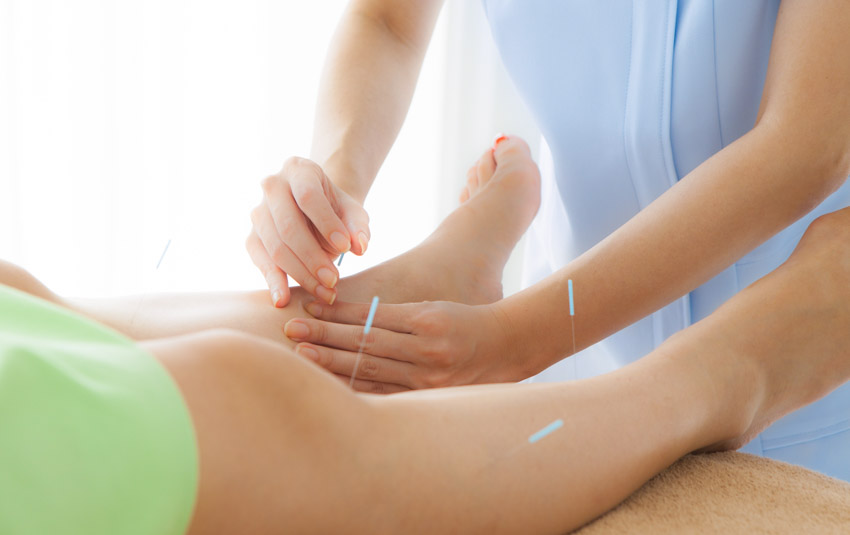
Acupuncture restores motor skills, neural function, and improves quality of life for patients after a stroke (CVA, cerebrovascular accident). Jian Central Hospital researchers conducted a clinical trial of 80 patients with post-stroke syndrome. The researchers compared two groups. One received standard physical rehabilitation and the other acupuncture plus physical rehabilitation. Patients receiving acupuncture plus physical rehabilitation had significantly greater improvements in motor skills, neural function, and life quality. [1]
Results were quantified using the Fugl-Meyer Assessment (FMA) of sensorimotor function, Barthel Index for Activities of Daily Living (ADL), and the NIH Stroke Scale/Score (NIHSS). Based on the data, combined acupuncture with physical therapy outperformed physical rehabilitation only.
The sample size consisted of 80 patients admitted into the hospital after having a stroke. Exclusion criteria included immune system disorders, malignant tumors, and hematologic disorders. Patients were randomly divided into two groups of 40. For the acupuncture group, 22 were male and 18 were female. Age range was 41 to 76 years and mean age was 56.13 ±4.71. Average course of disease was 4 to 21 days. For the control group, 24 were male and 16 were female. Age range was 39 to 77 years and mean age was 55.93 ±4.85. Average course of disease was 7 to 19 days. The two groups were comparable and there were no statistical distinctions between them prior to treatments in the study.
Both groups received physical rehabilitation exercise training and Chinese herbal medicine, daily, for 4 weeks. Forty-five minutes of rehabilitation was employed per day. Movements included balancing exercises in a sitting position, sit-to-stand exercises, and other items. The following herbal formula was decocted in water and given to the patients, daily:
- Jue Ming Zi
- Yan Hu Suo
- Gou Teng
- Yu Jin
- Niu Xi
- Sang Ji Sheng
- Chuan Bei Mu
- Chuan Xiong
- Dan Nan Xing
- Huan Qin
- Zhu Li
- Di Long
- Dang Gui
- Chi Shao
- Ban Xia
- Tian Ma
- Gua Lou
- Fu Ling
- Chen Pi
- Gan Cao
This formula is larger than the traditional formula Tian Ma Gou Teng Yin (天麻钩藤饮), which is often used for Chinese medicine differentially defined internal wind applications, especially for patients with hypertension. For the acupuncture combined therapy group, sterile filiform needles were inserted using a mild tonifying and attenuating (ping bu ping xie) technique into the following acupoints:
- GV20 (Baihui)
- LI15 (Jianyu)
- LI11 (Quchi)
- TB5 (Waiguan)
- PC6 (Neiguan)
- LI4 (Hegu)
- ST34 (Liangqiu)
- SP10 (Xuehai)
- ST36 (Zusanli)
- SP6 (Sanyinjiao)
- LV3 (Taichong)
Needles were retained for 30 minutes after achieving a deqi sensation and were applied daily, for 4 weeks. After treatment, NIHSS scores improved for both groups, with the acupuncture group showing a greater drop from 17.95 ±5.32 to 10.33 ±2.54. Lower numbers indicate greater clinical outcomes. The other group dropped from 17.95 ±5.32 to 13.06 ±4.67.
As for the Fugl-Meyer Assessment, the figures for the control group were 37.03 ±17.54 and 50.05 ±22.73, before and after the treatment. Those of the acupuncture group were 36.91 ±18.06 and 63.85 ±24.41. In terms of the Barthel Index, the change in the control group was from 27.63 ±9.51 to 47.32 ±12.83, while the change in acupuncture group was from 27.72 ±9.64 to 65.01 ±14.65.
The combined acupuncture therapy group outperformed the physical rehabilitation group. The researchers conclude that acupuncture significantly reduces muscle tension and improves regenerative nerve coordination. They add that acupuncture combined with physical rehabilitation is a workable treatment protocol for stroke patients.
Reference:
[1] Zhang Rong, Liu Shuanghui, Chen Yu, Zhang Wenhua, etl, Clinical Observation on Treating Stroke with Acupuncture, Contemporary Medicine, Jun.2021, Vol.27 No.16 Issue No.603.


